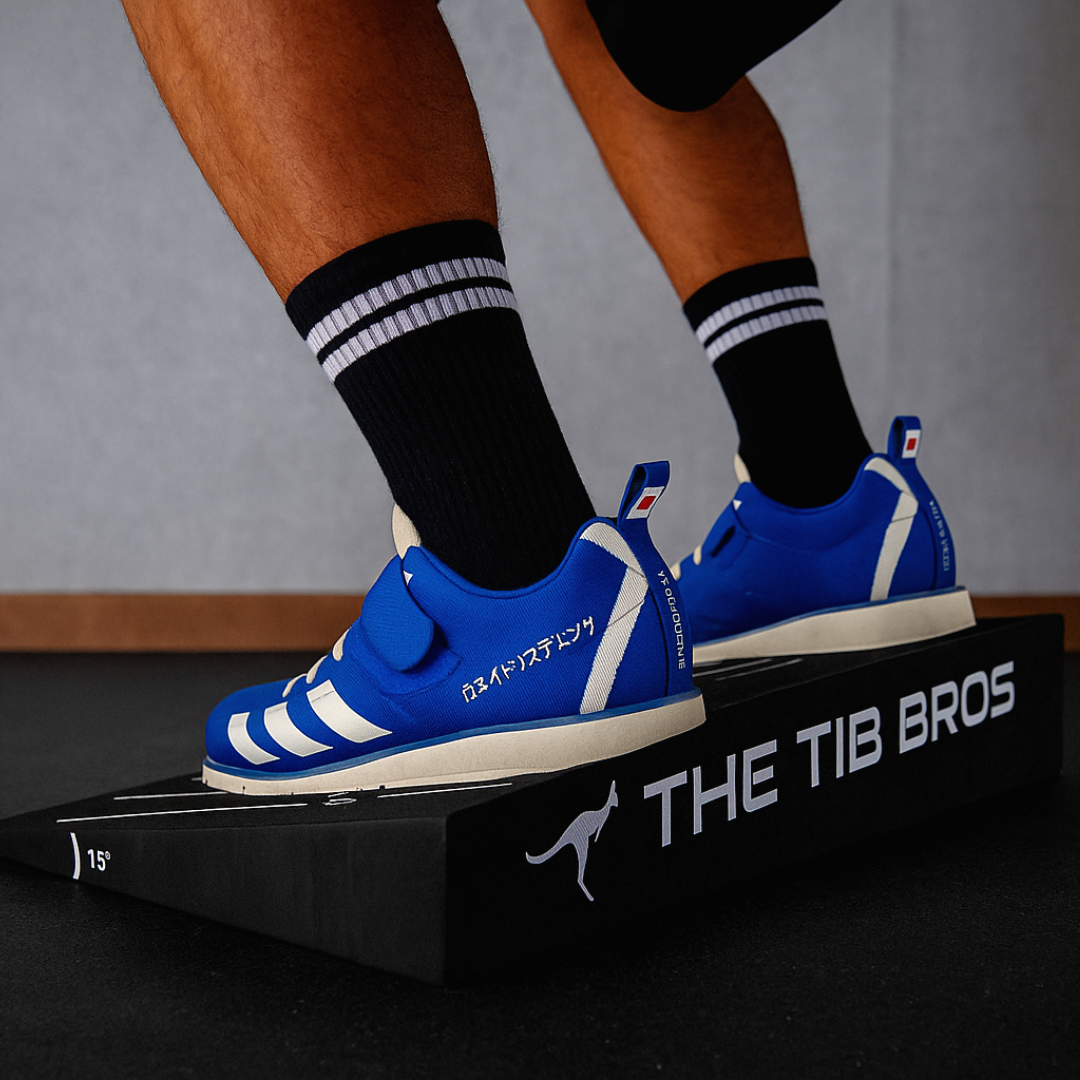🔍 Why Precision Matters
The Squat Wedge Block is more than just a heel-elevation tool—it’s a precision device for consistent, biomechanically sound squats. With built-in guideline lines at 0°, 15°, 30°, and 40°, you can:
-
Replicate setup across workouts
-
Accurately adjust foot flare and stance
-
Track form over time, ensuring safe progression
These markings empower you to fine-tune squat technique—not guesswork, but precision.

🌟 Benefits of Each Angle
0° – Quad-Dominant & Mobility-Focused
-
Emphasizes quadriceps activation
-
Ideal for screening ankle/hip mobility
-
Delivers balanced muscle engagement
Research shows increasing foot angle affects hip and knee loading—0° remains most quad-loaded, especially in wide stances startingstrength.combarbellrehab.comstartingstrength.com+11bmcsportsscimedrehabil.biomedcentral.com+11researchgate.net+11.
15° – Slight Toe-Out for Control
-
Softens descent, eases hip stress
-
Shifts load slightly toward outer quads/glutes
-
Great stepping-stone for deeper squats
Studies indicate even modest foot flare starts changing joint moments and muscle demand biomechanicseducation.comresearchgate.net+7bmcsportsscimedrehabil.biomedcentral.com+7researchgate.net+7.
30° – All-Round Performance Angle
-
Recommended by biomechanics experts for optimal depth and alignment
-
Better engagement of glutes, adductors, and quads
-
Minimizes knee valgus and injury risk
Clear guidelines say 10–30° toe-out is ideal for form, strength, and comfort bmcsportsscimedrehabil.biomedcentral.com+15squatuniversity.com+15blog.nasm.org+15research-collection.ethz.ch+5bmcsportsscimedrehabil.biomedcentral.com+5bmcsportsscimedrehabil.biomedcentral.com+5.
40° – Max Depth with Hamstring & Calf Focus
-
Increases hamstring activation by ~35%, calf by ~70% in descent phases pubmed.ncbi.nlm.nih.gov+6researchgate.net+6researchgate.net+6
-
Perfect for those with mobility limitations or in rehab
-
Safe, deep squats with reduced knee strain

💪 Muscle Activation Summary by Angle
| Foot Angle | Primary Muscle Focus |
|---|---|
| 0° (Flat) | Most quad-dominant. Balanced recruitment with high emphasis on rectus femoris and vastus medialis (Lorenzetti et al., 2018). |
| 15° | Slight shift to outer quads (vastus lateralis) and improved glute engagement. Good for progression from 0° (Kahrizi et al., 2024). |
| 30° | Strong engagement of quads, glutes, and adductors. Offers the most balanced lower-body activation and optimal force distribution (Lorenzetti et al., 2018). |
| 40° |
Highest hamstring (+35%) and gastrocnemius (+70%) activation during descent. Great for mobility-limited users and rehab protocols (University of Turin EMG Study, 2021). |
🧬 Tailored to Your Body
Every person has a unique biological makeup—femur length, ankle mobility, and hip architecture differ. The perfect squat angle varies by individual. Research into foot position confirms that there’s no one-size-fits-all—custom angles based on your anatomy yield better control and safety researchgate.net+9bmcsportsscimedrehabil.biomedcentral.com+9research-collection.ethz.ch+9researchgate.net+15barbellrehab.com+15research-collection.ethz.ch+15.
✅ Why Choose the Squat Wedge Block?
-
Precision: Clear angle and foot-placement lines for consistency
-
Customization: Swap between angles to match goals—mobility, strength, hypertrophy, rehab
-
Research-Backed: Angles designed around peer-reviewed biomechanics data
-
Inclusive Design: Supports everyone from beginners to athletes and rehab clients
📚 References (All Free to Access)
-
Lorenzetti, S. et al. (2018) “How to squat? Effects of various stance widths, foot placement angles…”, BMC Sports Sci Med Rehabil, 10:14. researchgate.net+10bmcsportsscimedrehabil.biomedcentral.com+10bmcsportsscimedrehabil.biomedcentral.com+10
-
Boccia, G. et al. (2021) “The impact of foot angle on lower limb muscles activity…”, J Sports Med Phys Fitness. researchgate.net+1iris.unito.it+1
-
Effects of Foot Position during Squatting on the Quadriceps Femoris (2016), PMC. pmc.ncbi.nlm.nih.gov+1pubmed.ncbi.nlm.nih.gov+1
-
Horschig, A. (2016) “Toes Forward or Angled Out When You Squat?”, Squat University. link.springer.com+11squatuniversity.com+11barbellrehab.com+11
-
BarbellRehab.com (2019) “Foot Placement for Squats: Turn Your Feet OUT For a Bigger Squat.” pubmed.ncbi.nlm.nih.gov+5barbellrehab.com+5startingstrength.com+5

Share:
🏆 The Tib Bros Named Finalists in Two Major Entrepreneurial Awards 🏆